All about wicker willow

Currently, many summer residents are building various decorative plantings on their plots. Wicker willows are a popular option. They will be able to decorate your land. Today we will talk about how you can make such a willow with your own hands, and what is required for this.
Peculiarities
Such decorative willows are wicker trees, which are made from a special durable willow twig. Such plantings can be left in pots or transplanted into the ground. Tall shrubs, consisting of intertwined branches, are used for a more beautiful and interesting landscape design. These willows can be bought ready-made, the most common option is the sample "Willow Danish Roots". It is a small tree made by a special technology of living weaving.
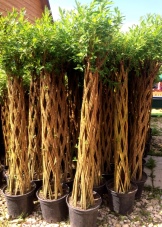
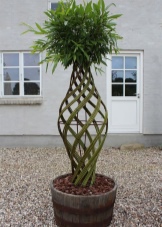
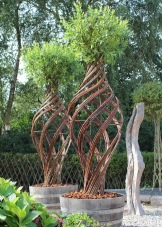
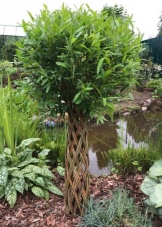
How to weave a tree with your own hands?
If you do not plan to buy wicker willow in the store, then you can do it yourself at home. On the Internet, anyone can find various detailed instructions, patterns and weaving master classes for beginners. Consider a way to weave such ornamental shrubs alive.

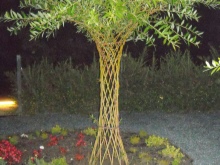

To begin with, live seedlings need to be grown in a pot. Sometimes it is immediately planted in open ground. Planting material can be found easily in damper areas. In this case, only straight shoots are suitable, a total of 36 pieces will be needed. Weaving will be carried out in groups of 6 pieces, and the distance between them should be about 2 or 3 centimeters. If you have prepared a small container, then it is better to take 4 willow twigs.
All twigs should be approximately the same thickness and length so that the finished tree turns out to be beautiful and as neat as possible.
Before planting the planting material in the ground, it will be necessary to additionally process all the cuts with a secateurs. They should eventually turn out to be a little oblique. Loose soil is poured into a container, while its height should be about 20-25 centimeters. It is slightly tamped.

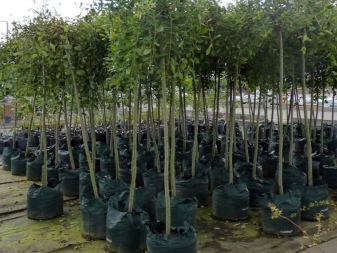
After that, you need to select 6 branches from the bundle and insert them into the prepared soil in a row one after the other along the container wall. It is better to immediately divide the bundle of 6 elements into two separate parts: the first 3 twigs are stuck on the left, the last 3 twigs are on the right. At the same time, all components should be carefully intertwined.
When the first diamond of weaving is obtained, it is securely fixed with a clothespin. You can also use a thin twine or simple rope instead. Such rhombuses are formed to the desired height. At the end, you need to make a limiter. To do this, take two thin willow twigs, connect them with their tops together, and then carefully braid every three elements with a "figure eight". When the material runs out, the next row is woven near.
All this is connected in a tight ring, the ends are securely fixed. When the twigs begin to take root in the soil, side shoots will grow along the entire length of the planting. As they grow, you will need to periodically pull them out of the kidney sinuses. The crown of the tree can be corrected with the usual pinching of the emerging young shoots. During the rooting process, the plant must be regularly watered abundantly so that it can develop and grow normally.
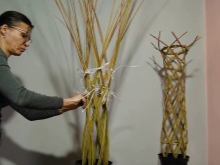
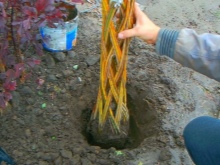
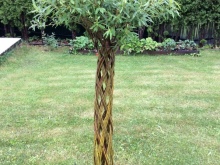
How to care?
In order for the plant to grow strong enough and be able to grow in the open field, important rules of care and planting should be followed. First, let's look at how to properly transplant a wicker willow to the site after rooting in a pot. This process includes several stages.
- Pit formation. Its depth should reach at least 30-40 centimeters, and the perimeter should be 40x40 centimeters (for a plant in a container with a volume of 10 liters).
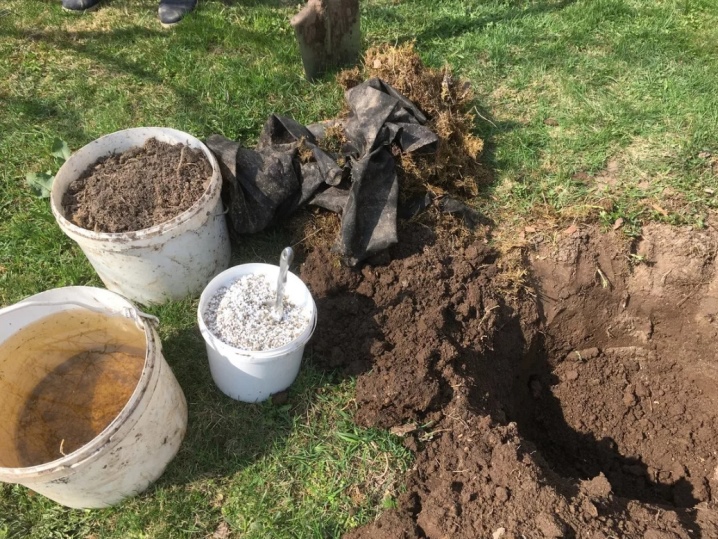
- Removal of land. All excavated soil is removed. In its place, another fertile land pours out. In this case, it is necessary to first introduce the appropriate nutrients for the normal development of the shrub. The bottom can be covered with compost first.
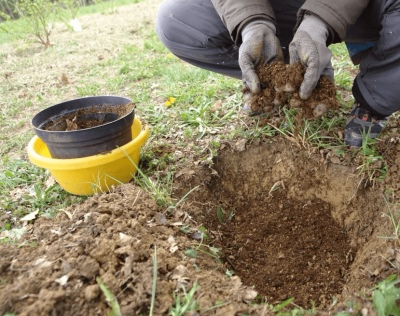
- Removing a plant from a pot. The wicker willow container is placed neatly on the ground in a horizontal position. This will make it as easy as possible to remove the plant from the container. In this case, you need to monitor the root system. It cannot be damaged.
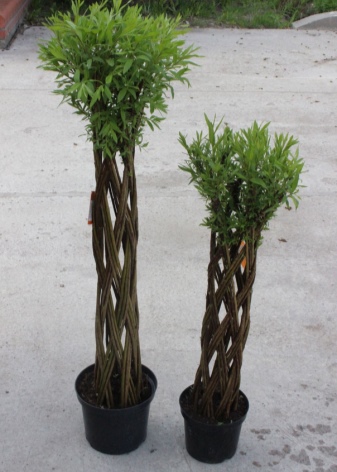

- Placing a plant in a hole. The wicker willow is carefully placed in the formed hole, and then the area around the plantation is sprinkled with earth (this can be alternated with watering). At the same time, the soil will fill the hole more densely, without forming a space with air.

- Watering. After the willow is placed in the hole and covered with earth, it must be watered abundantly. The volume of water per tree must be at least 10 liters. If the weather is dry and too hot, then it is recommended to water every day in large volumes until the weather returns to normal. With proper transplantation, such willows in the garden will soon be able to grow, since they have a good survival rate.
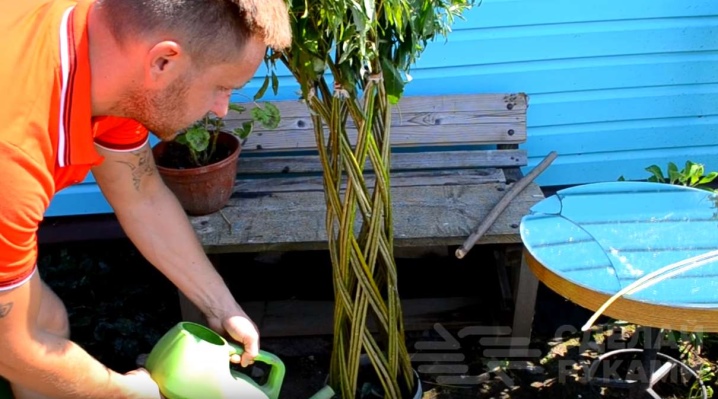
It is also necessary to follow other care rules that apply to wicker willows.
- Watering. It should be remembered that moisture from the surface of the leaf blades evaporates quite quickly, so such a wicker tree requires regular and abundant watering. Potted plants require hydration twice a day. In the spring and autumn seasons, it is recommended to moisten willows only twice a month. If frequent precipitation falls at this time, then watering should not be done at all. In summer, these ornamental shrubs will only need to be watered once a week. In this case, one such procedure should take about 20 liters of water. During periods that are too hot, it is better to moisturize twice a week. Often, due to a strong moisture deficit, such vegetation begins to quickly turn yellow and lose its attractive appearance.
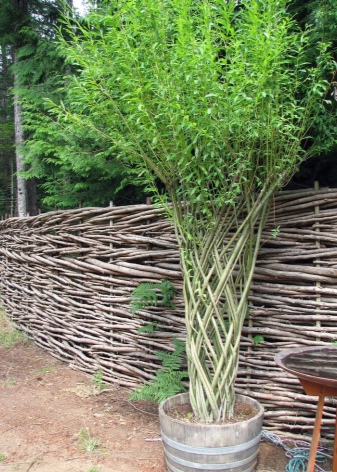

- Nutrient input. Such additional elements are required for stronger growth and development of the willow. In addition, they help to maintain a beautiful and fresh appearance of the shrubs. In the spring, it is better to apply humus or special mineral fertilizers to the ground. It is better to use them after warming up the soil. It is also worth using fertilizers in the middle of the summer period so that such ornamental vegetation does not freeze closer to winter. Perform thorough processing of trees in a timely manner so that they are not damaged by diseases and insects, rodents, and do not turn yellow.


- Pruning. Pruning should also be carried out in a timely manner, this procedure allows you to form beautiful and bright shoots on the bushes. The height and shape of the pruning must be formed already in the early stages for a still young shrub. It is held annually. The procedure can be performed at any time of the year, but the strongest shortening should be done only in the spring period of the year after flowering, but before the formation of leaf plates. In the first year after the planting of vegetation, all willows are trimmed in such a way that as a result, a length of no more than 20 centimeters remains.
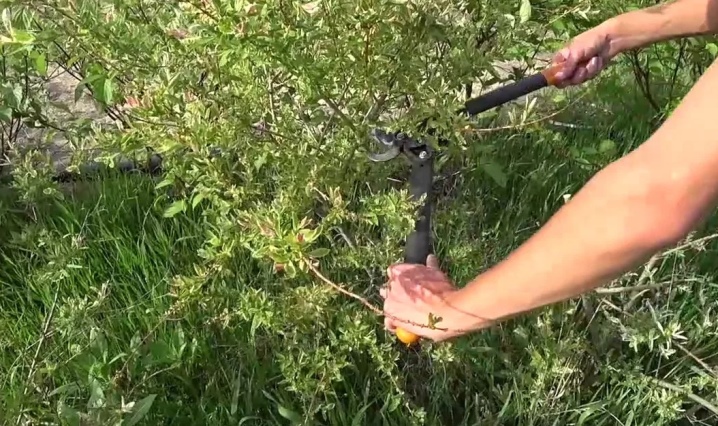
- Loosening. Remember to loosen the soil around the willow in a timely manner.This procedure is recommended to be carried out in the spring after the soil has completely warmed up, while the depth of loosening should be about 10 centimeters. In the summer, loosening the soil should be done about three times. In autumn, it is also better to carry out one loosening procedure. After it, it is necessary to do mulching; for this, peat is used. If it is not there, then you can use a mixture of coniferous bark.

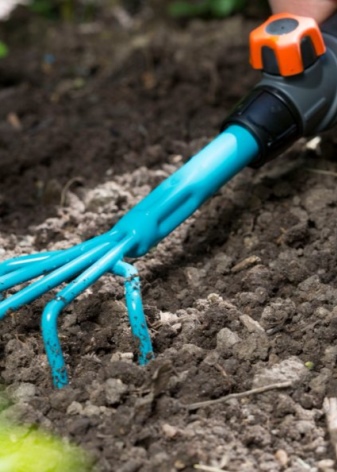
Such decorative wicker trees should also be trimmed periodically. This procedure will allow you to remove unnecessary parts, form the desired shape and give a neat and beautiful appearance.
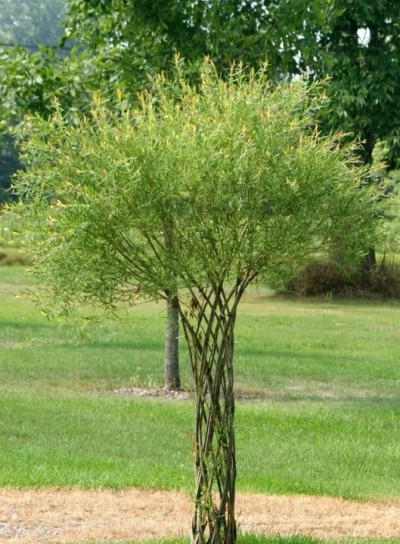
Willows are often exposed to various diseases, including rust, in which bright orange and yellow spots appear on the leaves. They are most often caused by excessive moisture in the spring. All damaged leaves should be cut off and burned immediately. After that, the vegetation is carefully treated with antifungal drugs.


Sometimes decorative willows also suffer from black spot. In this case, damage will appear along the veins on the leaf plates. Later, they will begin to gradually shrink and wither, and then fall off the bush. Over time, black spots will also begin to appear on the bark, the size of which can reach several centimeters. It is quite difficult to deal with such a disease; the tree can be treated with a strong fungicide.

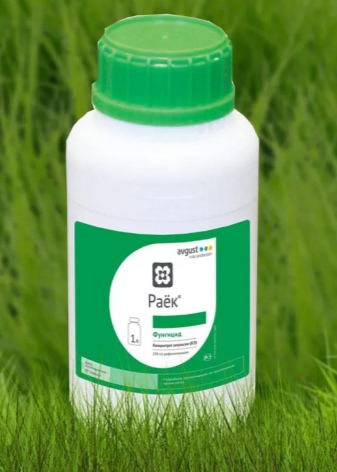
Common spotting is also common in willow. In this case, a large number of small brown spots can be seen on the upper side of the leaves. On the reverse side of the vegetation, you can observe the browning of the areas. Later, the plates will acquire a yellow color and begin to fall off.

Beautiful examples in landscape design
Wicker willows are often called "Russian palms". Such tall shrubs planted along a fence or other hedge, near the entrance to the garden, will look beautiful and unusual. However, they can be planted next to other decorative conifers.
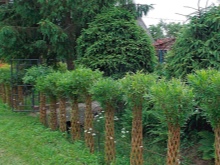

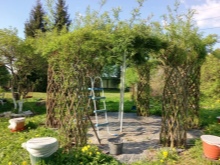
Another interesting option can be a single planting of a braided willow. In this case, such a decorative shrub will act as an accent in landscape design. It can be planted surrounded by other trees or flower beds.
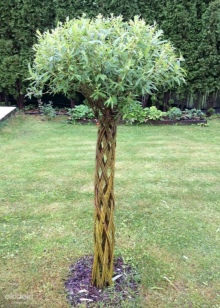
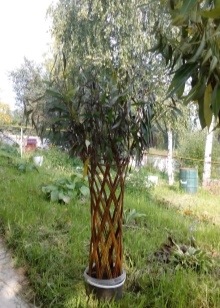
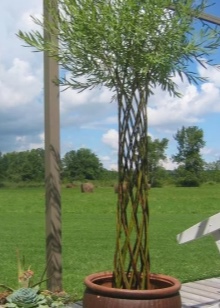
A wicker willow, planted in a beautiful flowerpot in the form of the same woven basket, will look unusual. At the same time, one of the largest and tallest tree in such a container can be placed in a summer cottage, and other smaller shrubs can be planted nearby directly into the soil.

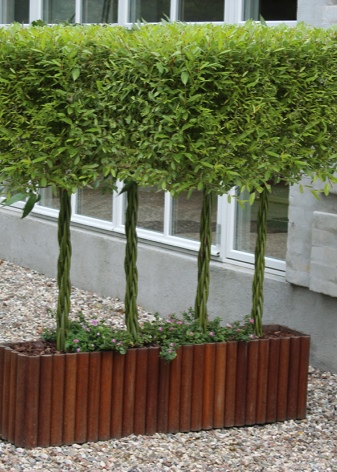
The most original decoration of landscape design can be a special bottle wicker tree. When planted in pots, such willow twigs are woven in such a way that the trunk looks like a bottle outwardly, it turns out as a result wider with an oval shape. Some of these plantings are almost round in shape. In the inner part of such a trunk, special rigid supports can be placed, which allow the structure to be made as strong and reliable as possible.
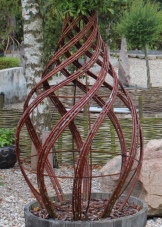

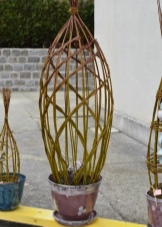

In the next video, you can find an interesting master class on making wicker willow.



































































The comment was sent successfully.